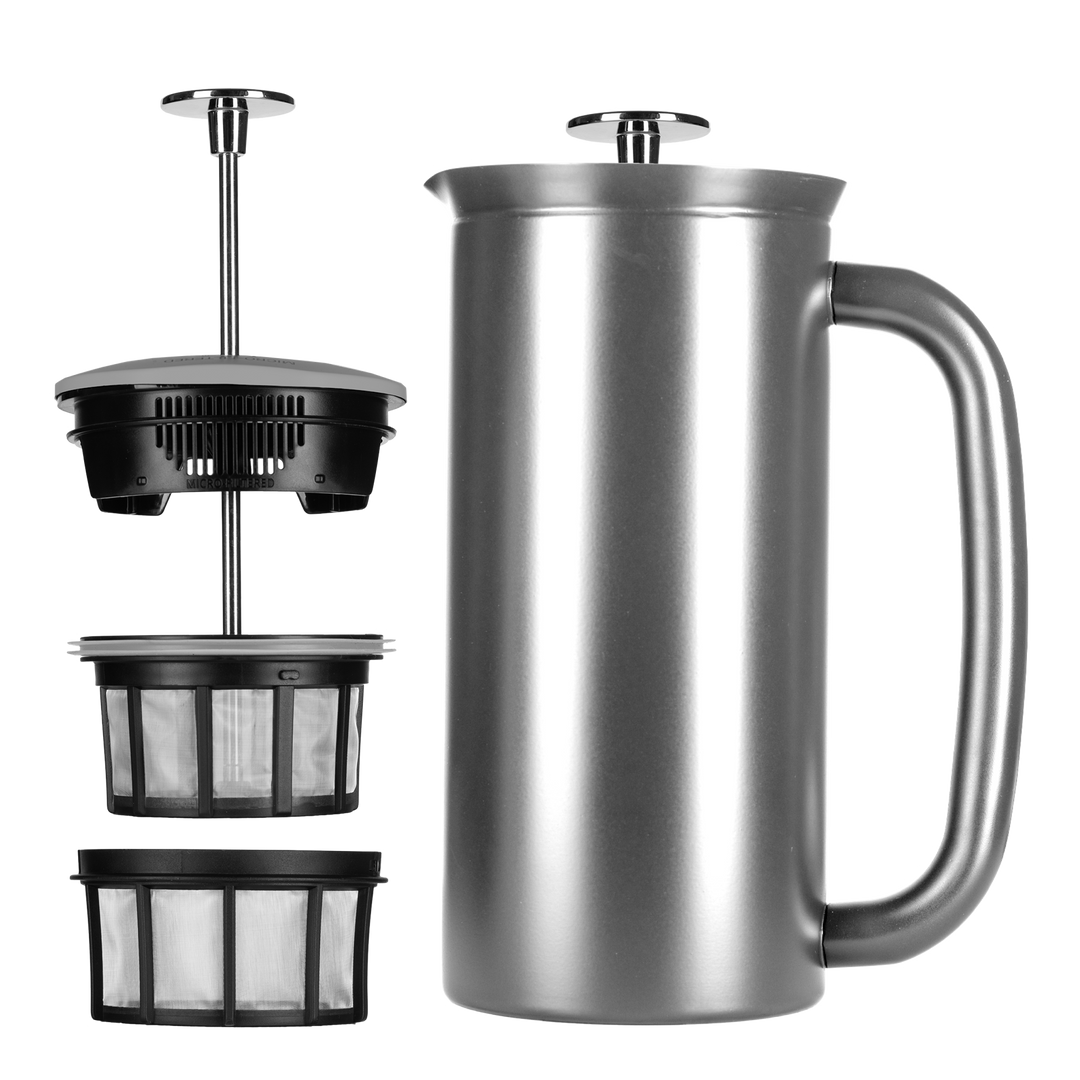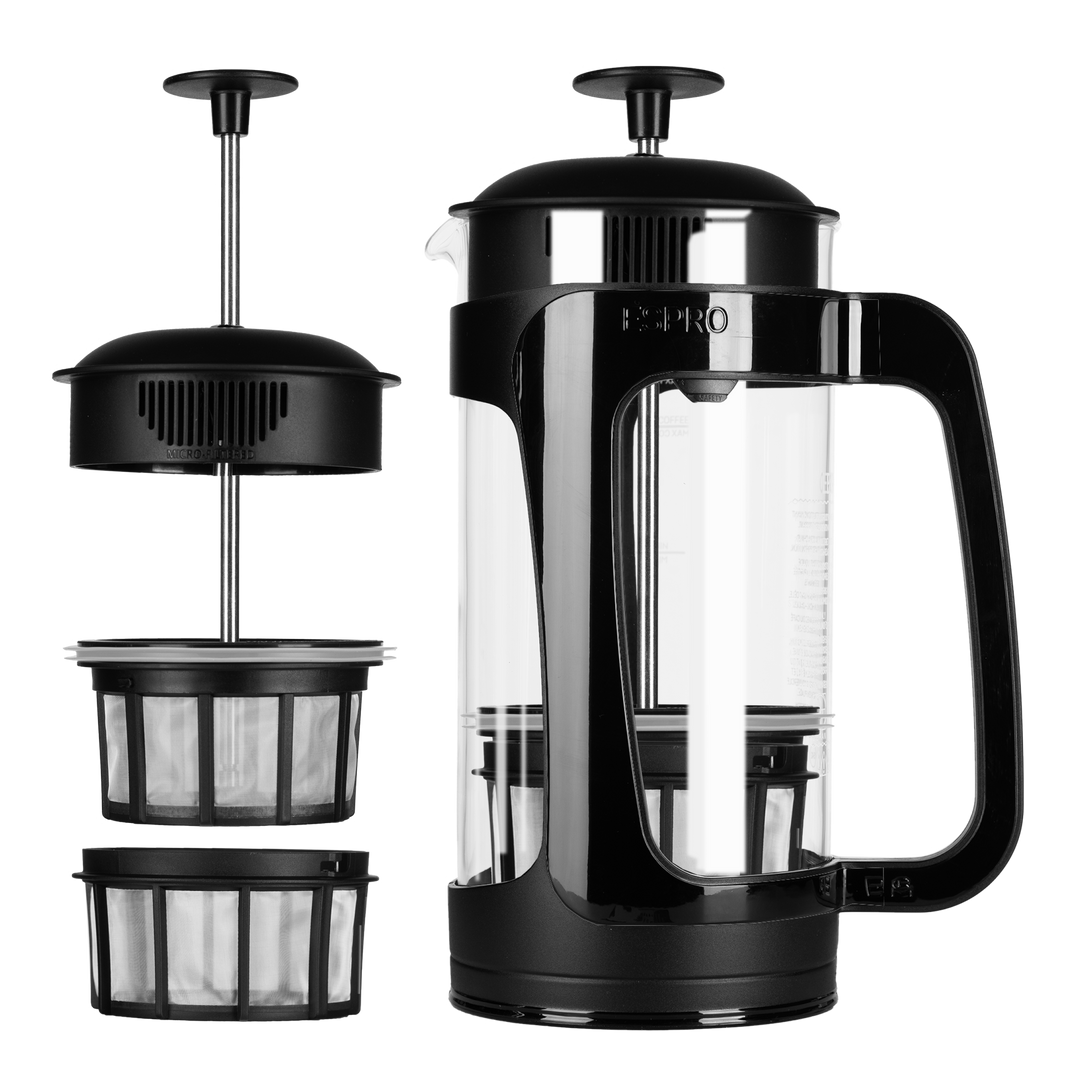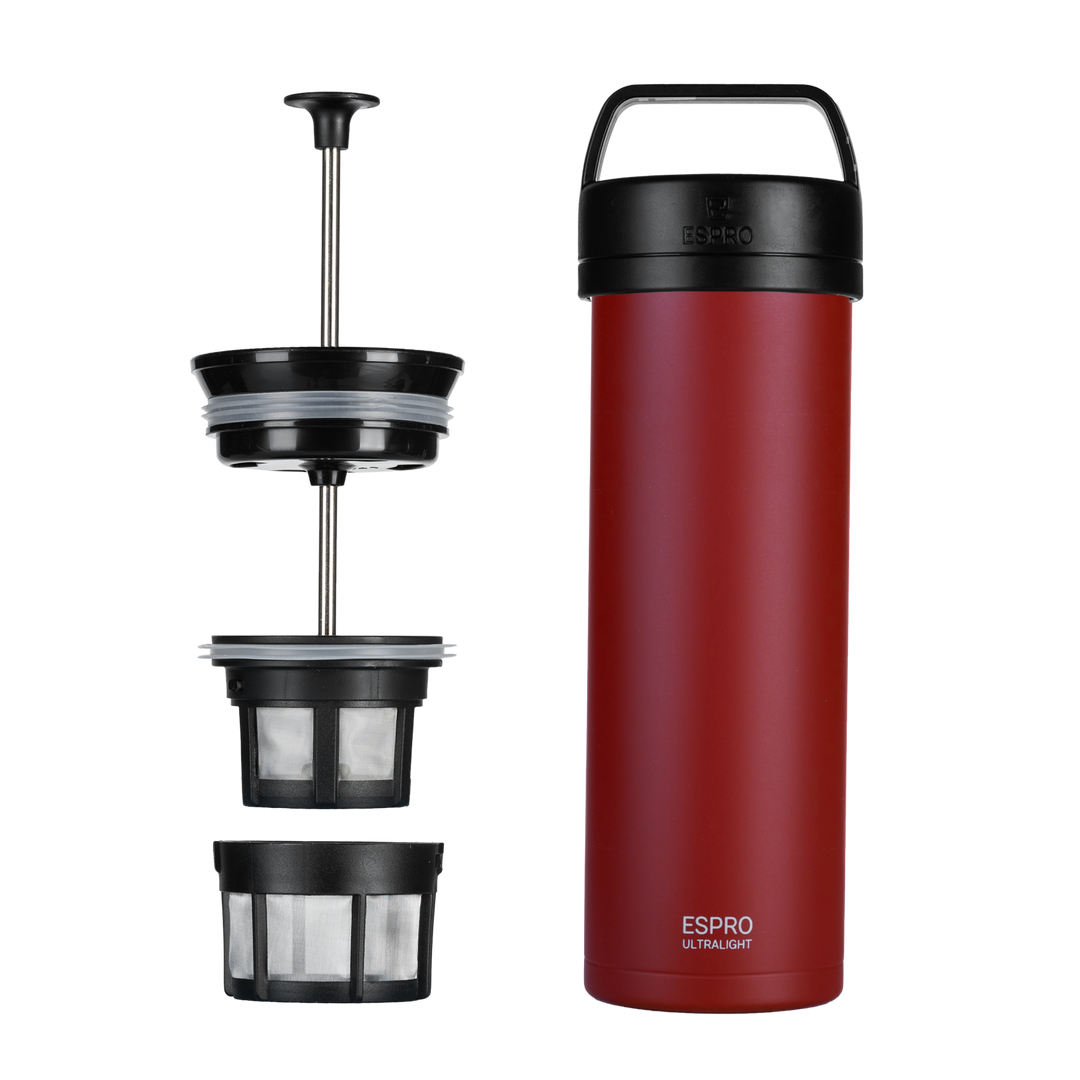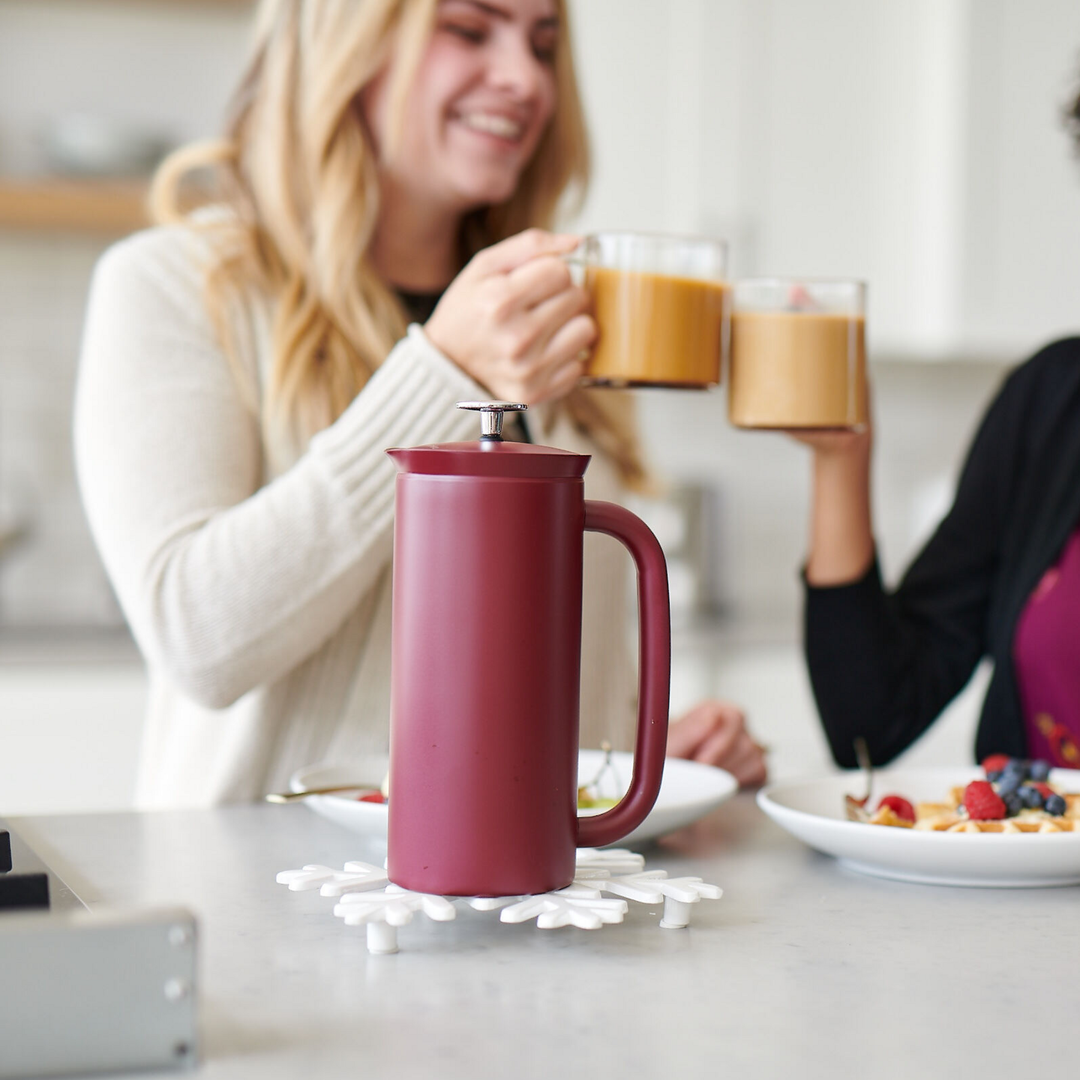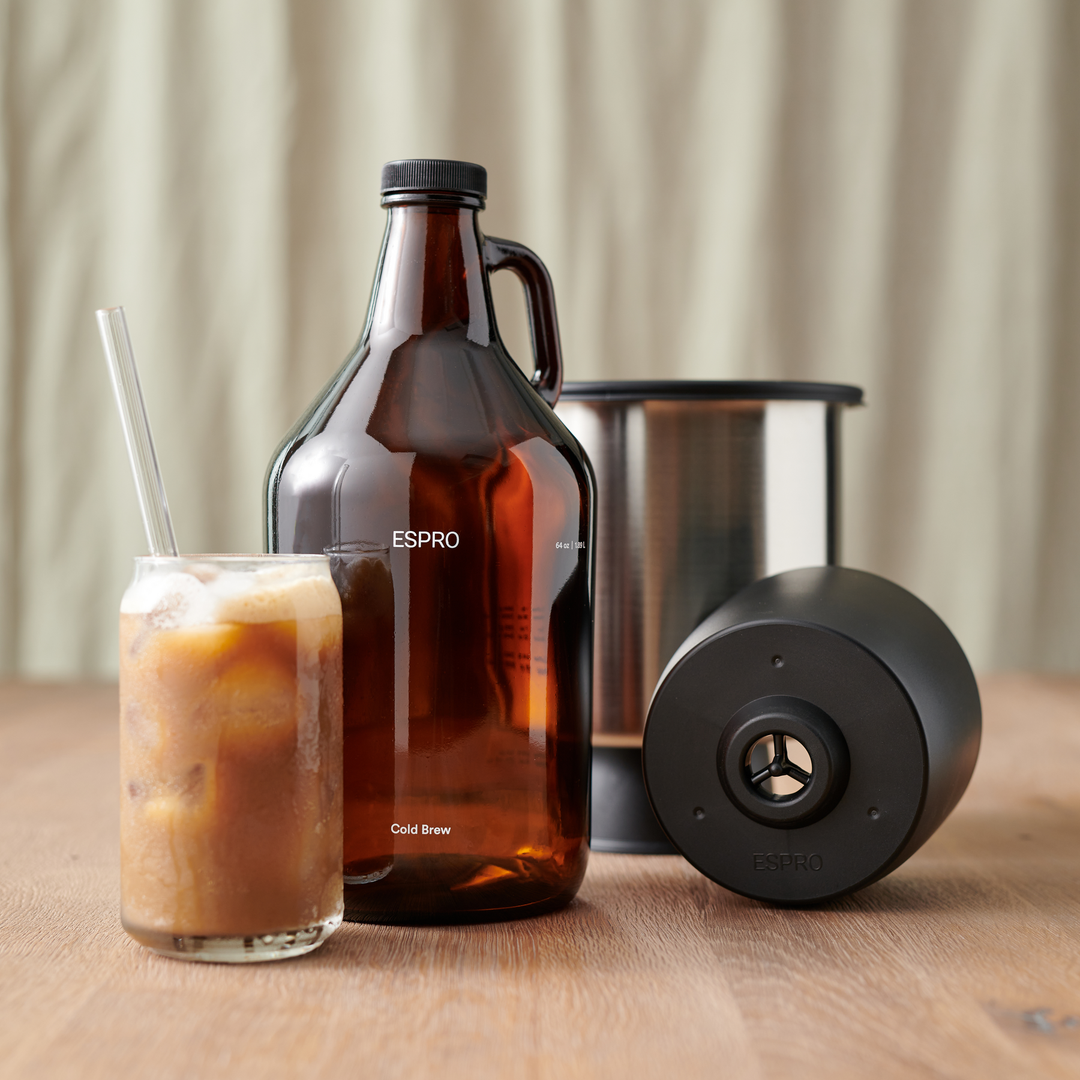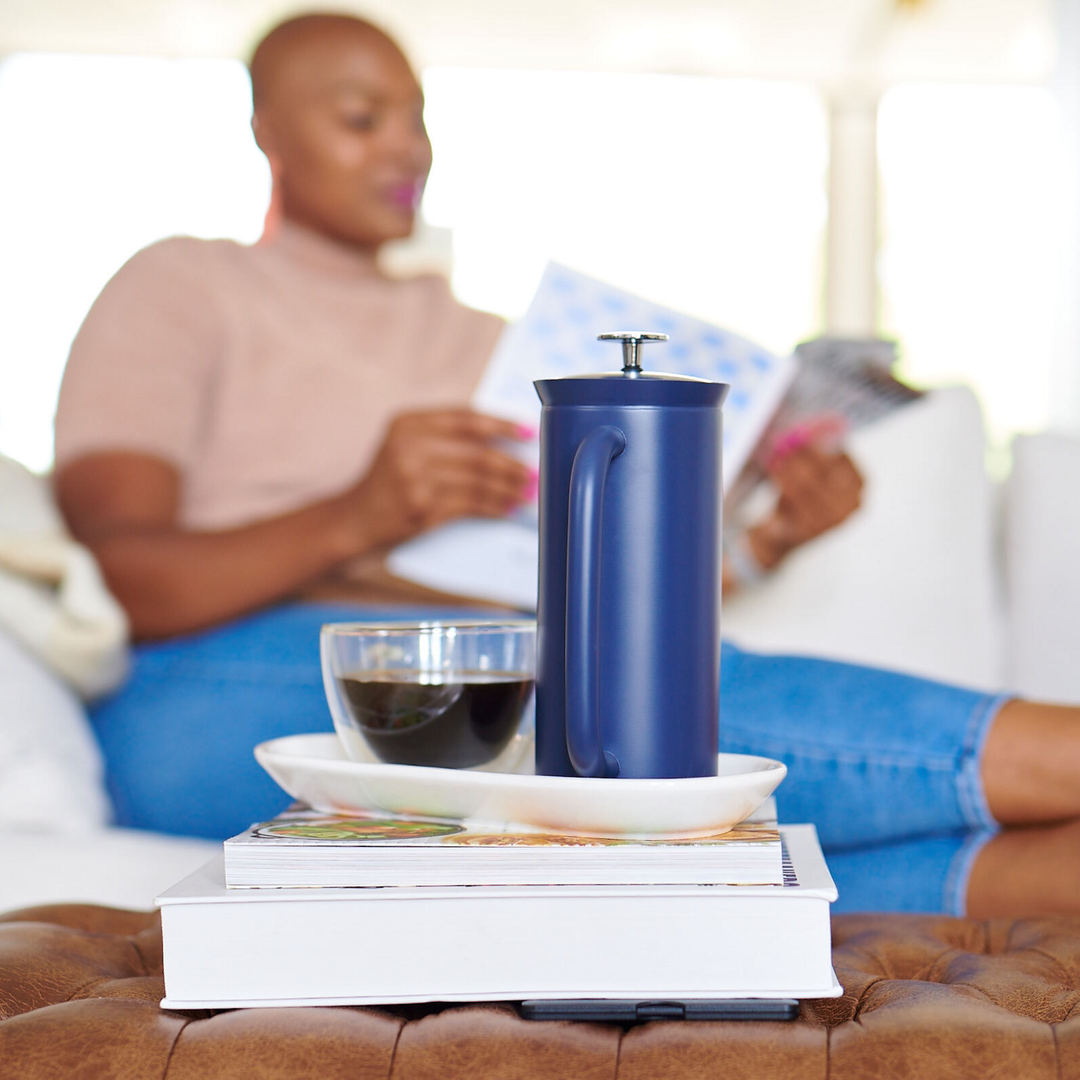Find the sweet spot for making the perfect coffee
Achieving that ideal brew involves both a little art and science. After all, so many variables can affect the taste of your coffee, from the size of the grind to the quality of the water. But it’s easy to craft that satisfying barista-quality brew at home when you understand how to adjust the fundamentals.
Better beans
For the best brew, use good-quality whole beans and grind them yourself. Make sure they’re fresh too (look for the roast date on the packaging); beans any older than a month are probably stale. Remember: air and light are coffee enemies! Store coffee beans in sealed opaque containers, or keep them in a cool spot in the cupboard.
Water wisdom
If you’re not using an automatic brewing machine, be sure to pay attention to water temperature. Whether boiling a standard or gooseneck kettle to make coffee in a French press or by pour-over, aim for a range between 195–205 degrees Fahrenheit. Any cooler and the extraction will be weak (making cold-brew coffee involves a completely different approach), while overheated water affects the quality of the taste too.
And don’t forget water quality. Chlorine and even natural minerals present in tap water can change the taste of your coffee. Minerals aren’t necessarily a bad thing for coffee; think about how those elements have positive effects on brewing beer or distilling whisky. But unless you’re a scientist, consider buying filtered water or purifying your own at home to achieve consistency in your coffee brewing.
The “Golden Ratio”
Every brew involves two essentials: water and coffee. It sounds simple enough, but when these ingredients (also called “brew ratio”) are out of balance, your coffee probably isn’t going to please your palate. That’s because when coffee and water come into contact, the extraction process starts, which ultimately affects its taste. Using too much coffee can lead to over-extraction, resulting in overly acidic or bitter flavors. Too little? Under-extracted coffee may be sour, sharp or simply taste flat.
So how much of each makes the best brew? Aficionados have found an ideal proportion they call the “golden ratio,” which is 17 parts of water for each part of coffee. Your perfect ratio might vary slightly, depending on your personal taste or method of brewing. For instance, instead of 17:1, you may opt for 18:1 or 16:1, especially if you add milk or sugar.
Size matters
It’s hard to imagine that coffee grind size (as well as the uniformity of the grounds) can influence the outcome of your brew, but it does. In fact, it’s an especially important factor that should be adjusted to suit your brewing method. Simply put: one size does not fit all. Inappropriate grind size affects proper extraction and thus, taste. Here are a couple of tips for choosing the correct coffee grind size, but sometimes trial and error is your best guide:
Espresso: Coffee grind size tends to be finer. If it’s too coarse, water filters through the coffee too quickly, resulting in a thin and weak-textured shot.
French press: This method requires a coarser coffee grind size. Too fine? The coffee will clog the filters, which prevents filtration.
Maximum exposure
Contact time, or the duration your coffee grounds are exposed to water, affects extraction. French presses have a longer extraction or contact time, up to four minutes. Espresso is at the other end of the spectrum, with a mere 20–30 seconds of extraction time required to push the hot water through the coffee grounds. A rule of thumb: coarse grinds require a longer extraction times than fine ones.
Get (really) agitated
When it comes to coffee, agitation is a good thing. The not-so-subtle act of actually using a spoon to vigorously stir your coffee or give it a good old swirl during brewing helps expose the grounds to more water, more evenly. The result? Better overall extraction of coffee from the grounds and a brew that’s more balanced. Experiment to find out what works to your taste. Try agitating between pours, which is another tip for extracting more flavor from coffee that’s starting to age.
Shape smarts
Like wine and spirits enthusiasts, coffee aficionados are increasingly recognizing how the shape of the drinking vessel can enhance aromas and tastes of specific types of beans. ESPRO’s first-to-market Coffee Tasting Cups tap into this concept, offering four types of durable porcelain cups designed to bring out the flavors Fruity, Cocoa, Floral and Spicy.
Heat retention
Sure, lukewarm coffee is lackluster, but heat retention can be a tricky thing. If you allow your coffee carafe to sit on a hotplate, your perfect pot of java will become over-extracted and might even taste burnt. The best way to keep your coffee from cooling down too quickly is to pour it into a preheated cup or heat up the vessel you’re brewing your coffee in, such as a French press.



